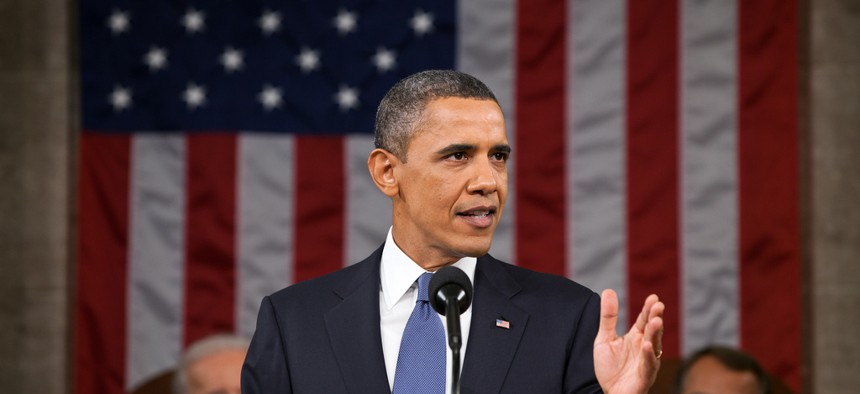Could a White House Order on Cybersecurity Drop This Week?

White House photo
After high-profile attacks, reports say directive could come as early as this week.
In the wake of recent high-profile hacking incidents at The New York Times and The Washington Post, the Obama administration has been speeding toward a long-anticipated executive order that would create ways for the federal government to share information with the private sector about potential cyberthreats.
According to a Bloomberg report, that directive could come as early as this week. Although a White House official wouldn’t confirm the timing, the draft document has been in the final stages of completion since last fall. In addition to establishing a voluntary protocol for companies looking to bolster their network defenses, the draft order also aims to fast-track approvals for more security clearances, which companies say they desperately need to protect electricity grids, transportation networks, and other parts of America’s critical infrastructure.
If it arrives Wednesday, the executive order will have been extraordinarily well-timed. On top of the recent hacks against U.S. journalists, a new intelligence report released Sunday also implicates other states in the cyberespionage business. The 2013 National Intelligence Estimate identifies by name France, Israel, and Russia as nations that have engaged in hacking for economic purposes.
At a recent cybersecurity conference in Washington, Rep. Mike Rogers, R-Mich., chairman of the House Intelligence Committee, estimated that “about 90 percent of the (cybersecurity) problem” could be resolved by better information-sharing, but described the threat in dramatic terms.
“We are absolutely under siege,” Rogers said. “And we are fooling ourselves if we don’t think it’s a problem.... This is a minute-by-minute changing threat spectrum like nothing we’ve seen before.” Rogers likened the potential fallout of a cyberwar to that of nuclear weapons and the threat of mutually assured destruction.
While the Obama administration’s executive order is aimed at helping firms identify and respond to potential cyberattacks like the ones that hit The New York Times, officials are also stressing that a presidential directive is only a stopgap measure. Andy Ozment, senior director for cybersecurity at the White House, warned utility operators last week that any executive order would not be “magical.”
“It is an expression of the president’s strategic intent,” said Ozment. “It is critical to highlight that this is not a substitute for legislation.”
As if on cue, Rogers said Monday that he and the intelligence committee’s ranking Democrat, Dutch Ruppersberger of Maryland, will be reintroducing the cybersecurity bill known as CISPA on Wednesday — one day after President Obama’s State of the Union address. Privacy critics successfully lobbied against the bill last year over a provision that would offer legal protections to companies that gave up user data to the government.
Meanwhile, policymakers in the European Union are hoping to tighten up regulations on businesses. A draft proposal circulated Sunday would require firms to admit when they’ve been hacked. While it’s unclear whether stronger E.U. reporting rules would someday migrate to the United States, look to Tuesday's presidential address to Congress for hints as to the administration’s emerging cyberpolicy.


